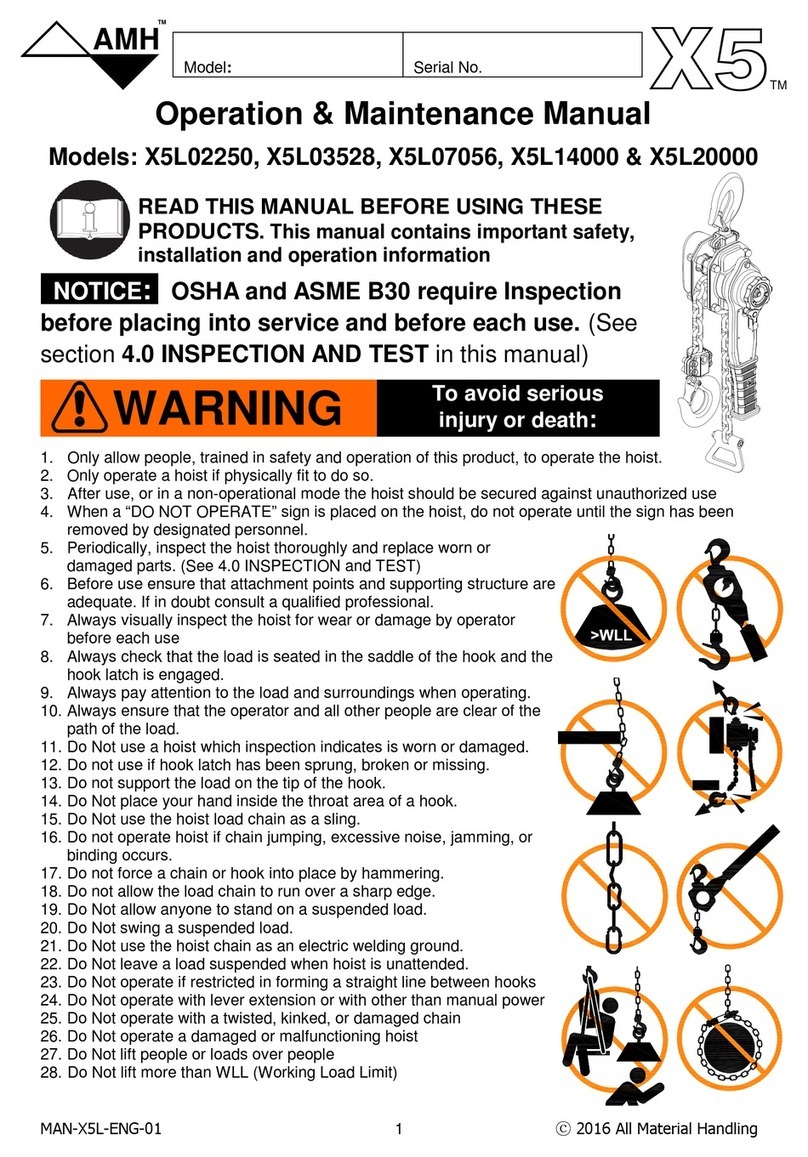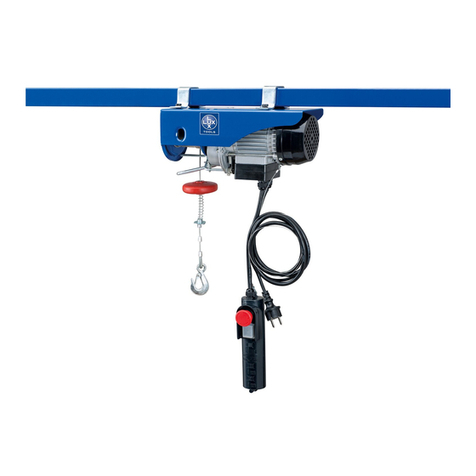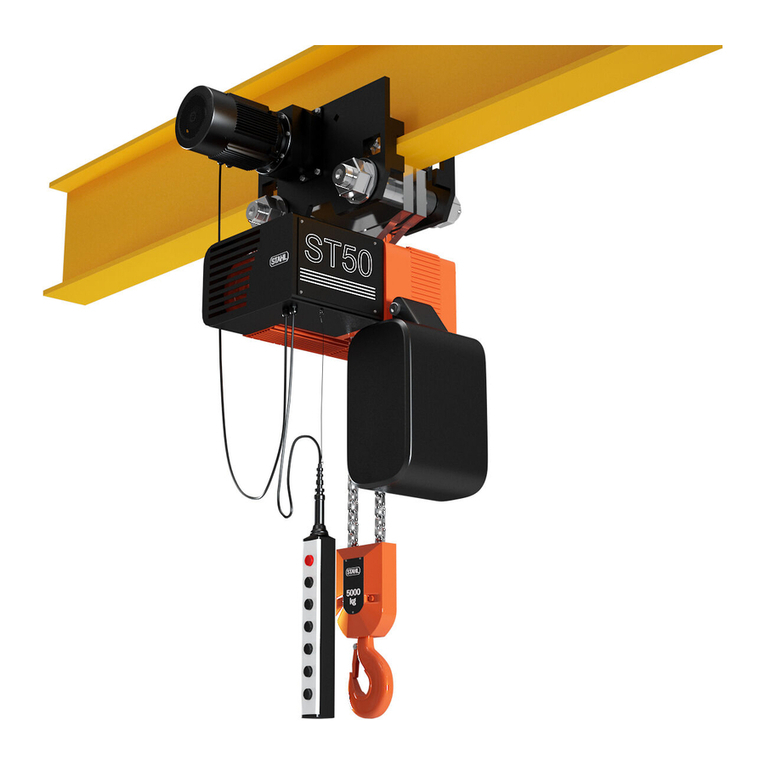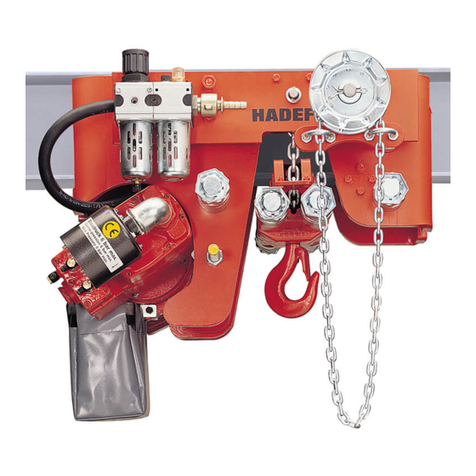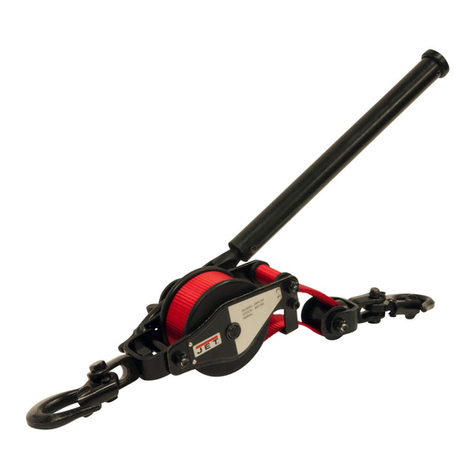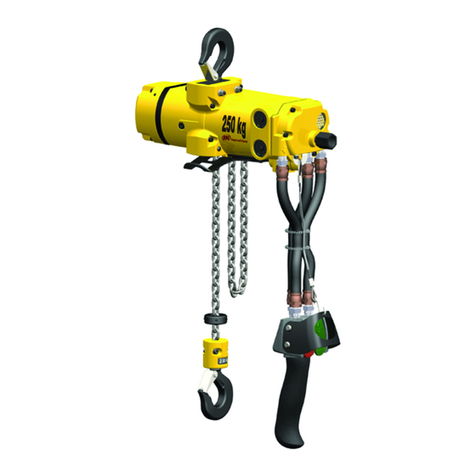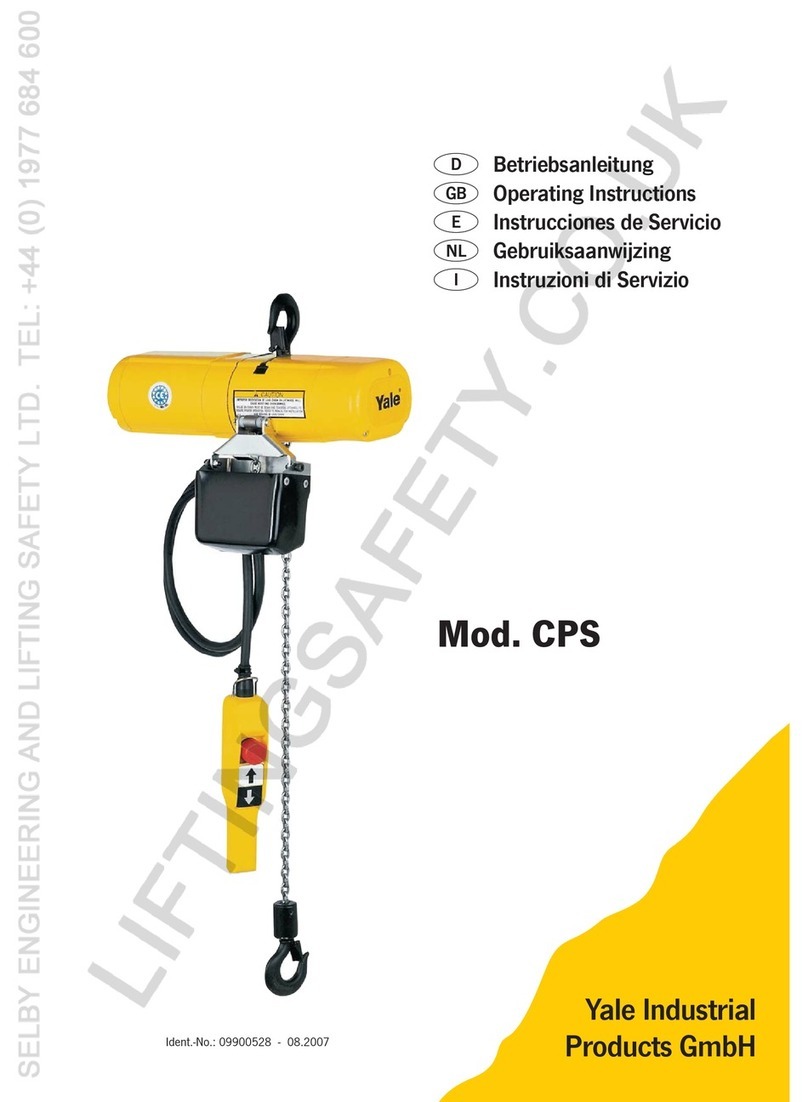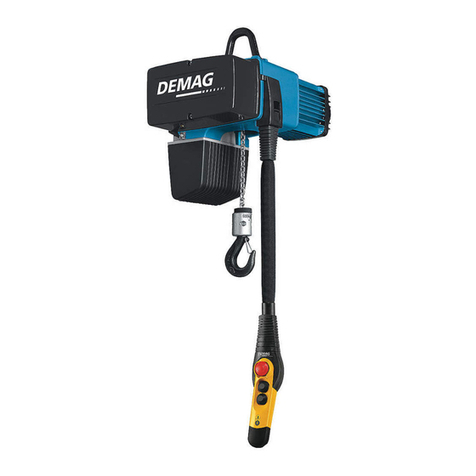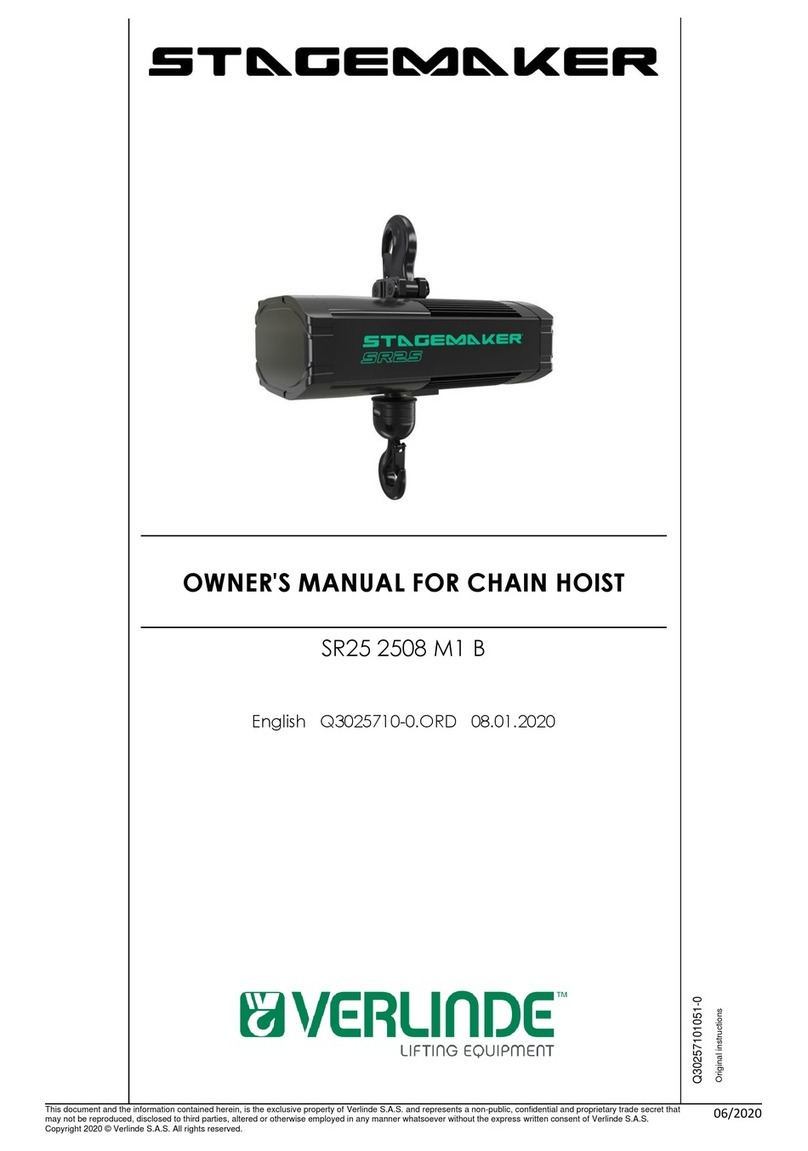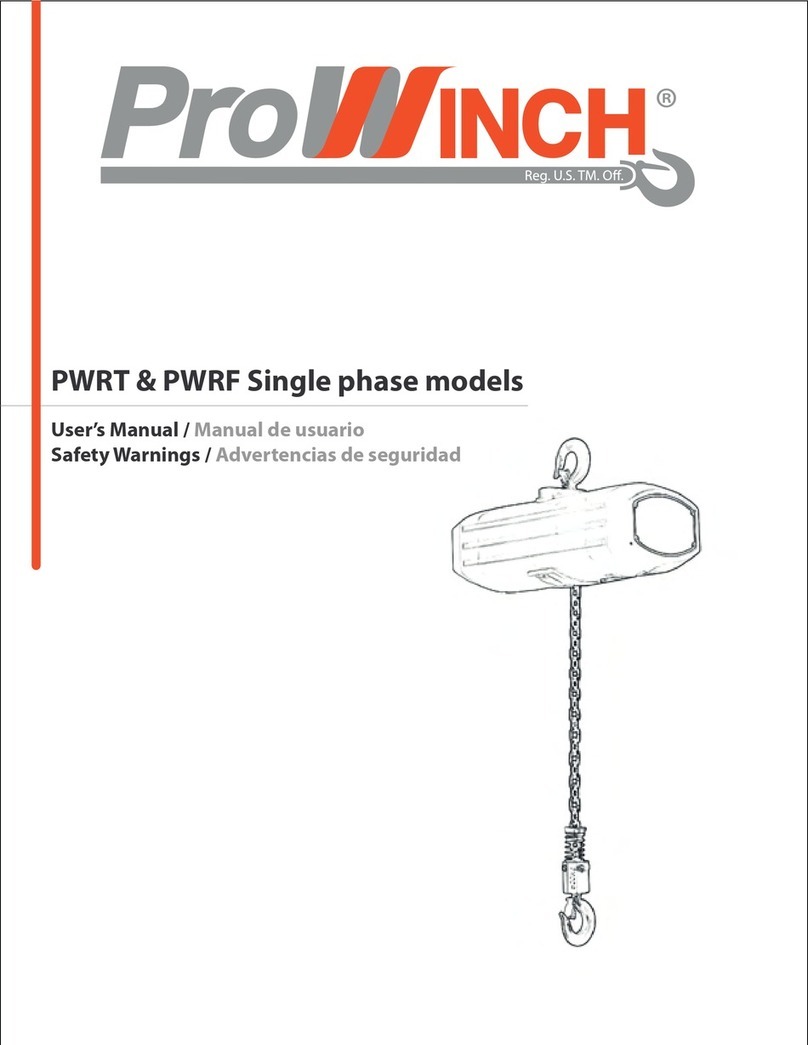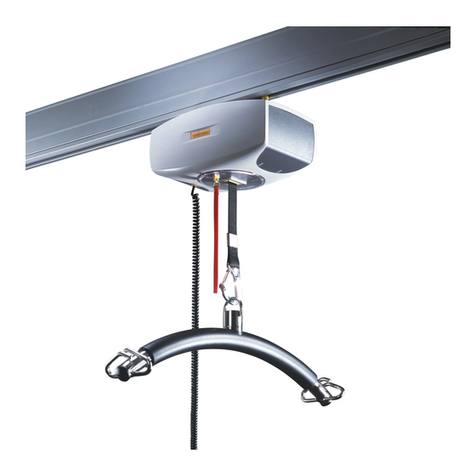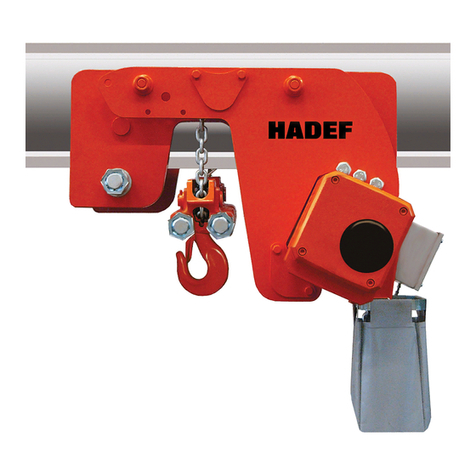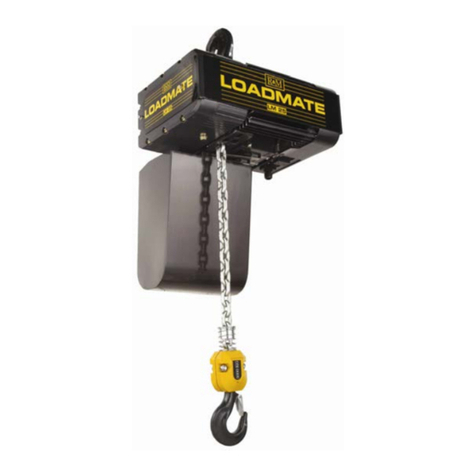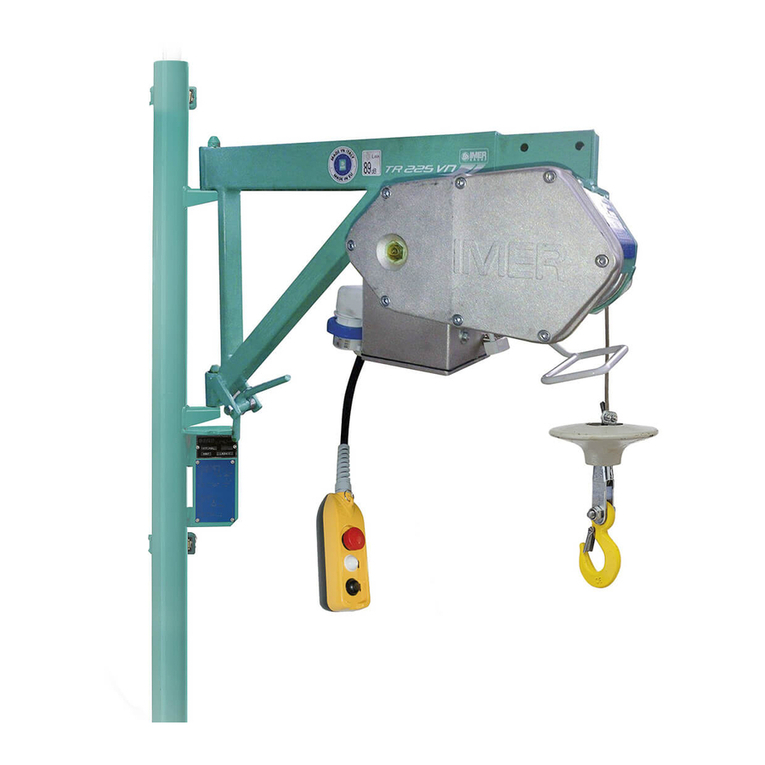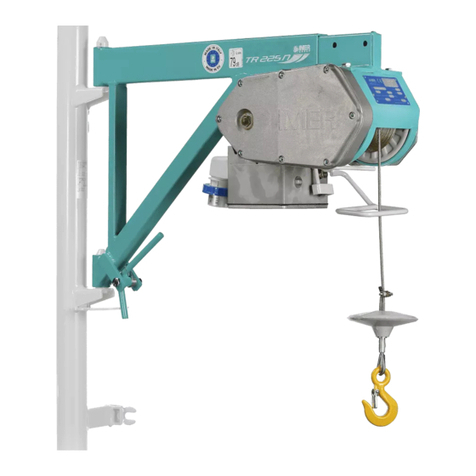
- 3 -
IMER INTERNATIONAL S.p.A.
ES 150 (110V/50Hz)
Caro cliente, ci complimentiamo per il suo acquisto dell arga-
no IMER, risultato di anni di esperienza: è una macchina di
massima affidabilità e dotata di soluzioni tecniche innovative.
OPERARE IN SICUREZZA: É fondamentale ai fini della
sicurezza leggere attentamente le seguenti istruzioni.
Il presente manuale di USO E MANUTENZIONE deve essere cu-
stodito dal responsabile di cantiere, sempre disponibile per la
consultazione.
Il manuale è da considerarsi parte della macchina e deve essere
conservato per futuri riferimenti (EN 292/2) fino alla distruzione
della macchina stessa. In caso di danneggiamento o smarrimen-
to potrà essere richiesto al costruttore un nuovo esemplare.
Il manuale contiene importanti indicazioni sulla preparazione del
cantiere, l installazione, l uso, le modalità di manutenzione e la
richiesta di parti di ricambio.
Comunque è da ritenersi indispensabile una adeguata esperien-
za e conoscenza della macchina da parte del montatore e dell
utilizzatore.
Affinché sia possibile garantire la sicurezza dell operatore, la
sicurezza di funzionamento e una lunga durata dell apparec-
chio, devono essere rispettate le istruzioni del manuale, unitamente
alle norme di sicurezza e prevenzione degli infortuni sul lavoro
secondo la legislazione vigente (uso di calzature e abbigliamen-
to adeguati, uso di elmetti, di cinture di sicurezza, predisposizione
di parapetti prospicienti il vuoto, ecc.).
É vietato apportare modifiche di qualsiasi natura alla
struttura metallica o impiantistica della macchina.
IMER INTERNATIONAL declina ogni responsabilità in caso di non
osservanza delle leggi che regolano l uso di apparecchi di solle-
vamento, in particolare: uso improprio, difetti di alimentazione,
carenza di manutenzione, modifiche non autorizzate,
manomissioni e/o danneggiamenti, inosservanza parziale o tota-
le delle istruzioni contenute in questo manuale.
1. DESCRIZIONE GENERALE
Avvertenza:
Operare con una macchina di sollevamento
richiede grande attenzione e perizia, il comando può
essere affidato solo a personale esperto o che abbia rice-
vuto le necessarie istruzioni.
1) La macchina è concepita per il sollevamento di mate-
riali e per essere utilizzata nei cantieri di costruzioni
edili.
2) É vietato l uso per il sollevamento di persone e/o di
animali.
3) Non deve essere utilizzato in ambienti ove esista il
pericolo d esplosioni o incendio o in ambienti di scavi
sotterranei.
La macchina è costituita essenzialmente da (fig.1):
- Verricello a tamburo formato da un tamburo(rif.3) montato sull
albero del riduttore (rif.12), da una fune metallica (rif.1), da un
gancio di sollevamento (rif.2) e contrappeso (rif.9).
- Motoriduttore composto da un motore elettrico autofrenante
(rif.4) e riduttore ad ingranaggi a bagno d olio (rif.12).
- Impianto elettrico (rif.5) con pulsantiera a comando diretto (rif.7).
- Leva di comando fine corsa salita (rif.8).
- Telaio portante (rif.6).
2. SUPPORTI PER L ELEVATORE
La struttura su cui l elevatore viene applicato deve essere in
grado di sopportare le sollecitazioni indicate in fig. 4, che si
generano durante il funzionamento.
IMER dispone di una ampia scelta di supporti, rappresentati in
figura 6 -7- 8 -10 -11 e 12, previsti per le diverse applicazioni di
cantiere, progettati in modo da trasmettere idoneamente alle strut-
ture questi carichi.
Le forze, indicate agli appoggi di ciascun supporto, dovranno
essere considerate nel calcolo di verifica delle strutture di so-
stegno (ponteggi, terrazze, soffitti, ecc.) effettuato da tecnico
competente.
In caso di applicazione dell' elevatore su ponteggio, que-
sto deve essere opportunamente controventato (vedere
fig. 9)
Per l installazione dei diversi supporti, seguire le istruzioni di cui
ciascuno è fornito.
Nel caso si utilizzino dei supporti con portata diversa
dall elevatore, sull insieme dell apparecchio installato dovrà es-
sere affissa, ben visibile la portata ammissibile in funzione del-
l elemento più critico del sistema.
2.1 PREDISPOSIZIONE DEL POSTO DI LAVORO
- Il lato dell apertura di accesso del carico al piano
deve essere protetto con un parapetto di altezza supe-
riore a 1m ed arresto al piede.
- Accertarsi che la corsa di lavoro sia sgombra per tutta laltezza
e prendere le precauzioni necessarie perchè nessuno possa
sporgersi dai piani intermedi.
- Delimitare l area di carico inferiore perchè nessuno possa so-
starvi durante il sollevamento.
3. MONTAGGIO (fig.1)
1) Il montaggio dell elevatore, così come il suo utilizzo, richiede
personale esperto o che abbia ricevuto le necessarie istruzioni.
Dato il peso dell' elevatore, devono essere impiegati un numero
di operatori tali da non creare situazioni di pericolo durante il suo
trasporto ed installazione.
2) Laltezza massima di lavoro (25m) è quella relativa alla posi-
zione del motoriduttore corrispondente al perno superiore del
supporto.
3) posizionare i morsetti sulla struttura dell edificio, verificare
l allineamento verticale dei perni di sostegno (10) quindi inserire
le boccole del telaio sui perni ed applicare la rondella e la copiglia
di sicurezza antisfilamento (11) del morsetto superiore.
4) Nel caso di montaggio su supporto a cavalletto, fissare il telaio
al cavalletto mediante i fori di fissaggio previsti (fig. 12) utilizzan-
do viti e dadi autobloccanti forniti con il carrello, seguire per il
resto le istruzioni fornite con il
cavalletto.
5) Liberare il gancio.
L elevatore è dotato di
pulsantiera a 3 pulsanti (fig.2):
nero = discesa, bianco = salita,
rosso = arresto d emergenza.
4. ALLACCIAMENTO ALLA RETE ELETTRICA
- Verificare che la tensione risulti conforme ai dati di targa della mac-
china.
- Verificare inoltre che la tensione di linea sia compresa tra +/- 5% del
valore nominale.
- La linea elettrica di alimentazione deve essere provvista sia di prote-
zione contro le sovracorrenti, sia di tipo differenziale e che il condut-
tore di collegamento a terra abbia una sezione come quella del condut-
tore. Il dimensionamento dei conduttori deve tener conto delle correnti
di avviamento e della lunghezza della linea per evitare eccessive
cadute di tensione (rif. Tab.1).
Evitare l impiego di prolunghe avvolte a spire sui tamburi.
- Il conduttore di alimentazione deve essere di tipo adatto per frequenti
movimenti e rivestimento resistente alla abrasione (per esempio H07RN-
F).
- Collegare la spina alla macchina avvitando la ghiera di ritegno mecca-
nico e grado di protezione IP67.
- L elevatore è così pronto per la prima manovra di collaudo.
5. ISTRUZIONI DI COLLAUDO
- Attenzione!! Questa prova deve essere fatta da persona-
le esperto e competente e devono essere prese le necessa-
rie precauzioni per la sicurezza del personale.
- Attenzione: il collaudo deve essere eseguito prima dell
utilizzo dell elevatore.
Prima di iniziare il collaudo verificare accuratamente che tutta
l installazione dell elevatore sia stata eseguita correttamente.
Fig.2
















